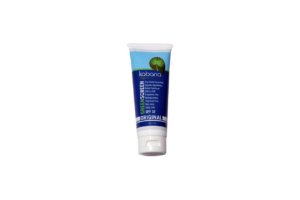Sunscreen is not just a beach day necessity―it’s skin care for life! And the body’s biggest organ loves to drink up whatever you wear, so don’t let the ingredients be a mystery.
With so many options out there, what should you keep an eye out for? Firstly, it’s good to know that sunscreen is either mineral-based or chemical-based. What’s the difference between the two? Mineral sunscreens often contain zinc oxide and/or titanium dioxide. These are key ingredients that act as a shield above the skin with broad-spectrum UVA and UVB protection, and sit on the skin’s surface. If you have sensitive skin, mineral is the safer bet. Chemical sunscreens penetrate the skin and absorb the sun’s rays. It’s less visible on the skin, and doesn’t leave white-cast.
Dermatologist Lauren Ploch, MD, breaks the difference down, saying, “Mineral sunscreens are like a healthy, home-cooked meal, [while] chemical sunscreens are like the fast food of sunscreens.” But at the end of the day, the best sunscreen is the sunscreen you wear!
Don’t forget the power of hats and sun-protective clothing! Whether you prefer mineral or chemical, the most important thing to remember is not to go without coverage. 1 in 5 people will be diagnosed with skin cancer in their lifetime, but that doesn’t mean you should hide from the sun. So, while you’re soaking up that vitamin D, love on your skin with thoughtful coverage.
Here are our favorite SPFs out there that will protect and defend your skin long-term.

Our Top Sunscreen Recommendations

Our Top Pick:
Kabana Organic Skincare Green Screen ($38)
We love this one for its ingredients like artesian spring water, extra virgin olive oil, jojoba oil, shea butter, and vitamin E. (It also comes in various skin tints!)
Budget:
Neutrogena Clear Body ($13)
Oil-free and non-comedogenic, so it won’t cause breakouts or clog pores. Ideal if you have acne prone skin.
Sensitive Skin:
ATTITUDE Oatmeal Sensitive Natural Care ($21)
Super clean and fully transparent. It’s hypoallergenic and soothing (great for those with sensitivities.)
Tinted:
La Roche-Posay ($38)
This lightweight 100% mineral tinted face sunscreen is good for sensitive skin. It’s fast-absorbing, and leaves a tinted finish for a healthy glow.
Waxhead Sun Defense Sunscreen Stick ($35)
This one is ultra-nourishing, reef safe, cruelty free and gluten free, and delivers UVA/UVB/UVC Blue light protection. Choose your tint and use it daily instead of foundation or as a beauty balm.

Remember, our skin drinks up and absorbs everything we put on it. Many of these ingredients hang around and can be harmful to our bodies. Recent studies have shown that many of the common chemical ingredients used in sunscreens are absorbed into the body’s bloodstream at concentration levels higher than the FDA’s safety threshold. One concern is that the chemicals can disrupt hormones in the body, and can show up breast milk, urine, and blood plasma samples.
A few ingredients to avoid:
Benzene: This can be harmful to your blood when absorbed, and is linked to anemia.
Oxybenzone: This can cause allergic skin reactions, and behaves like a hormone disruptor in many studies.
Octinoxate, or Octyl Methoxycinnamate: This can have hormone effects on the metabolic system and can affect thyroid hormone production.
Seed Oils: These oils can cause damage to skin cells through cell membrane damage when exposed to the sun.
Other ingredients not generally recognized as safe due to insufficient data: Avobenzone, cinoxate, dioxybenzone, ensulizole, homosalate, meradimate, octisalate, octocrylene, oxybenzone, padimate O, and sulisobenzone.
When to throw it away: Sunscreens can break down while still in the bottle. To be safe, dispose when the mixture clumps or separates.
Curious about the sunscreen on your bathroom shelf?
Search the ingredients, UVA/UVB balance, and possible health concerns of any SPF at the EWG (Environmental Working Group)







